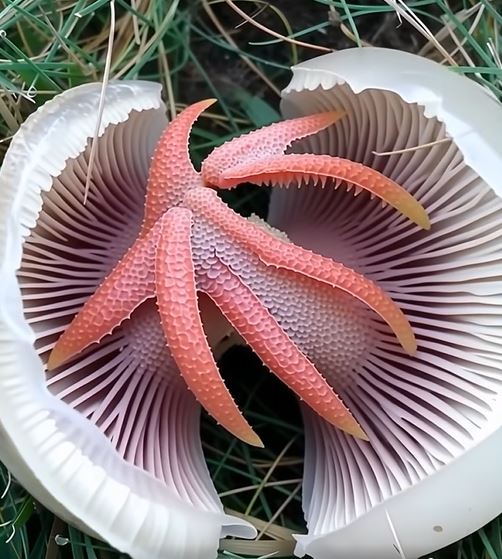My peaceful morning in the garden was abruptly hijacked by a smell so foul it cut through the fresh air like a knife. One moment I was enjoying the scent of damp soil and blossoms, the next I was recoiling from an odor of pure decay. I followed my nose, expecting to find a dead bird or a possum, but what I discovered was infinitely stranger. Lying in the grass was a slimy, reddish creature, or so I thought. It was writhing slightly and had a texture that looked both fleshy and alien. My first instinct was to back away, a primal fear telling me this thing was not right.
The smell was unbearable, a pungent reek of spoiled meat that made it hard to even stand nearby. My mind raced through bizarre possibilities. Could a predator have left part of a kill behind? Was it some kind of mutated slug? The more I looked at its finger-like projections and vibrant color, the less it seemed to belong to this world. The fear of the unknown kept me rooted to the spot, but a burning curiosity eventually won out. I needed to know what this thing was.
Technology came to my rescue. I snapped a clear photo with my smartphone and began searching online. I described it as a “bright red, stinky, tentacled thing found in yard,” and the internet delivered an immediate answer. The images that popped up were a perfect match. I was looking at Anthurus archeri, commonly known as the Devil’s Fingers or Octopus Stinkhorn mushroom. The shock of the identification was profound. This horrifying, animal-like mass was simply a fungus going about its business.
The discovery sent me down a rabbit hole of research. I learned that this incredible mushroom is originally from Australia but has become established in other regions. Its shocking appearance and revolting smell are all part of a masterful survival strategy. The fungus uses its stench of rot to attract flies, which mistake it for a decaying carcass. When the insects land to investigate, they become unwitting couriers for the mushroom’s spores, spreading them far and wide. The slime I saw was actually a spore-rich substance designed specifically to stick to the legs of these flies.
I decided to let nature take its course and left the mushroom undisturbed. It served as a daily, if pungent, reminder of the planet’s incredible biodiversity. The experience changed my perspective entirely. Now, when I work in the garden, I do so with a renewed sense of awe, knowing that beneath the surface of the familiar lawn and flowerbeds lies a world of bizarre and fascinating organisms, each with its own strange and wonderful story of survival.


